Japanese cooking has many cutting techniques, here is how to make Tazuna Konnyaku by simply making a incision in the middle of Konnyaku.
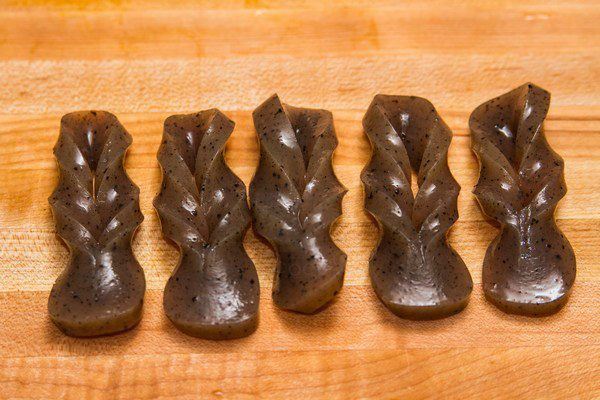
Tazuna means “reins” in Japanese. You can use Tazuna Konnyaku in dishes like Oden and Chikuzenni.
1. Slice konnyaku to about 1/8 to 1/4 inch (7-8 mm) thick. At the center of each slice, make a 1 ½ inch slit.
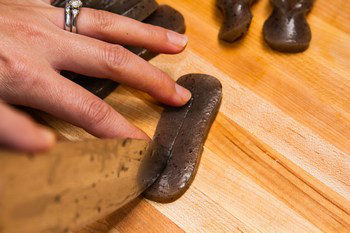
2. Put the bottom part through the hole.
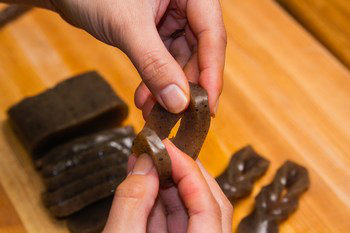
3. Push it in.
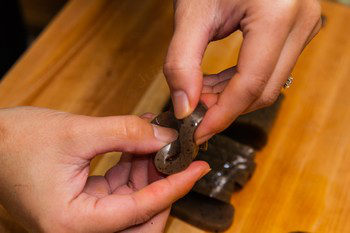
4. Pull out the end then it’s done!
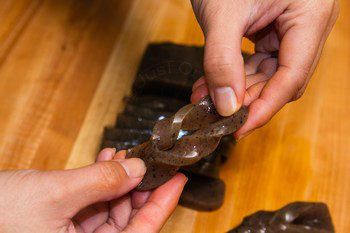

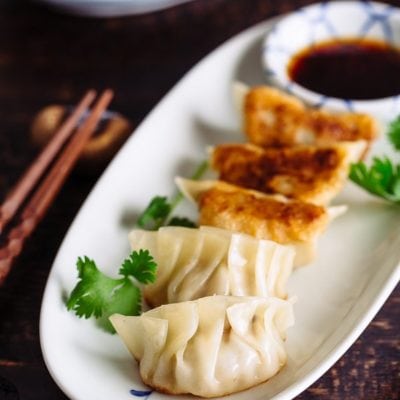


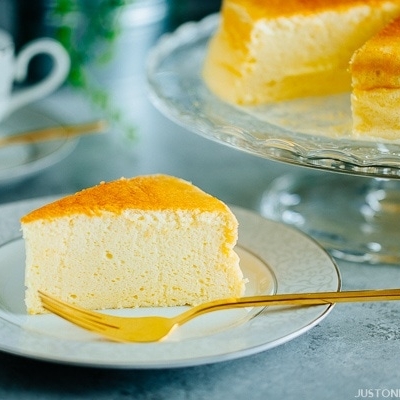





[…] Tazuna Konnyaku. Slice konnyaku to about 1/8 to 1/4 inch (7-8 mm) thick. At the center of each slice, make a 1 ½ […]